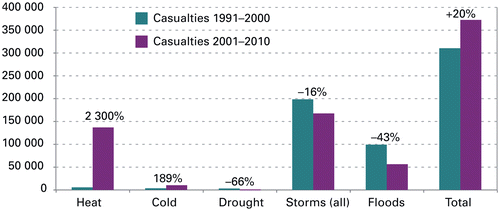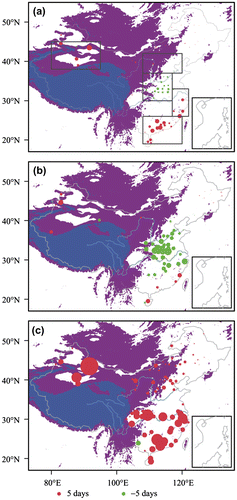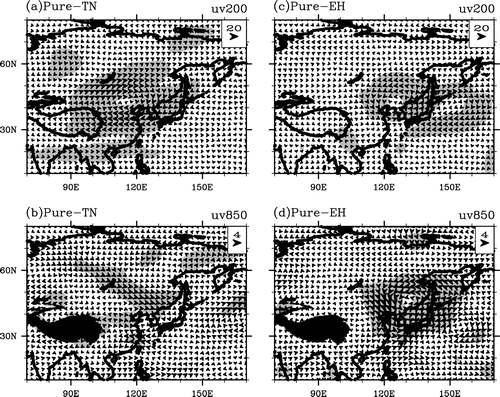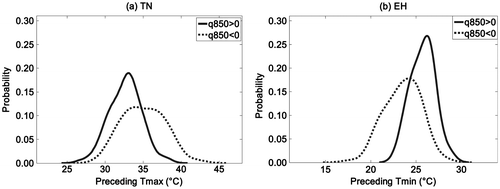Figures & data
Figure 1. The causalities due to various extreme weather events during 1991–2000 (green bars) and 2001–2010 (purple bars). The percentages above the bars indicate the change in losses during 2001–2010 compared to 1991–2000. Source: WMO (Citation2013).

Figure 2. Linear trends in the number of extreme heat days (with maximum temperature greater than 35 °C) for the years from (a) 1958 to 2008, (b) 1958 to 1983, and (c) 1984 to 2008. The marks are proportional to the values of the trend, with red dots for positive values and green dots for negative values. Only the stations with a significant trend level above 95% are displayed. Units: d/10 yr. Source: Wei and Chen (Citation2009).

Figure 3. Composite anomalies of (a, c) 200-hPa and (b, d) 850-hPa wind (units: m s−1) for (a, b) tropical nights and (c, d) extreme heat in Beijing. Source: Chen and Lu (Citation2014b).

Figure 4. Probability distribution of the preceding (a) maximum temperature (Tmax; units: °C) for Beijing tropical nights and (b) minimum temperature (Tmin; units: °C) for Beijing extreme heat under conditions of higher humidity (solid lines) and lower humidity (dashed lines). Source: Chen and Lu (Citation2014c).

